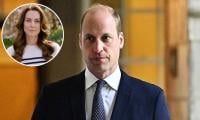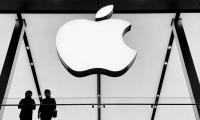WASHINGTON: U.S. consumer prices increased broadly in July, but the signs of an acceleration in inflation will likely do little to change market expectations that the Federal Reserve will cut interest rates again next month amid worsening trade tensions, Reuters reported.
The report from the Labor Department on Tuesday could however, reduce the probability that the U.S. central bank will cut rates by half a percentage point at its Sept. 17-18 policy meeting.
Financial markets have fully priced in a 25-basis-point cut following a recent escalation in the bruising trade war between the United States and China, which sparked a stock market sell-off and caused an inversion of the U.S. Treasury yield curve, heightening the risk of a recession.
Fears about the impact of the trade tensions on the U.S. economic expansion, the longest in history, prompted the Fed to cut its short-term lending rate by 25 basis points last month for the first time since 2008.
“The recent pickup in inflation won’t deter the Federal Reserve from cutting interest rates in September as the downside risks to the outlook from trade have become more threatening,” said Ryan Sweet, a senior economist at Moody’s Analytics in West Chester, Pennsylvania.
The consumer price index increased 0.3 percent last month, lifted by gains in the cost of energy products and a range of other goods, the government said. The CPI had edged up 0.1 percent for two straight months. In the 12 months through July, the CPI increased 1.8 percent after advancing 1.6 percent in June.
Economists polled by Reuters had forecast the CPI would accelerate 0.3 percent in July and rise 1.7 percent on a year-on-year basis.
Excluding the volatile food and energy components, the CPI gained 0.3 percent after rising by the same margin in June. The so-called core CPI was boosted by increases in prices for apparel, airline tickets, healthcare and household furnishings.
In the 12 months through July, the core CPI climbed 2.2 percent, the biggest gain in six months, after rising 2.1 percent in June.
The Fed, which has a 2 percent inflation target, tracks the core personal consumption expenditures (PCE) price index for monetary policy. The core PCE price index rose 1.6 percent on a year-on-year basis in June and has undershot its target this year.
U.S. Treasury yields rose after the release of the CPI data while the dollar .DXY strengthened against a basket of currencies. U.S. stock index futures extended losses.
Inflation has remained moderate despite the White House’s tariffs on Chinese imports as the duties have been largely on capital goods. That could change after President Donald Trump announced last month an additional 10 percent tariff on $300 billion worth of Chinese imports starting Sept. 1.
The new tariffs would affect mostly consumer goods. Goldman Sachs estimates that tariffs have boosted year-on-year core PCE inflation by 10-15 basis points so far and that the new duties will add another 20 basis points.
In July, gasoline prices rebounded 2.5 percent after dropping 3.6% in June. Electricity rose 0.6 percent. Food prices were unchanged for a second straight month. Food consumed at home slipped 0.1 percent.
Owners’ equivalent rent of primary residence, which is what a homeowner would pay to rent or receive from renting a home, rose 0.2 percent in July, the smallest gain since December 2018. Rents had risen by 0.3 percent for six straight months.
Healthcare costs jumped 0.5 percent, the most since August 2016, after advancing 0.3 percent in June. There were increases in prices for hospital services, doctor visits and prescription medication.
The surge in healthcare prices suggests the core PCE price index likely rose solidly in July. The government will publish the July data later this month.
Apparel prices rose 0.4 percent after surging 1.1 percent in June. Used motor vehicle and truck prices increased 0.9 percent in July after rebounding 1.6 percent in the prior month. Prices for new motor vehicles fell 0.2 percent. The cost of household furnishings and operations increased 0.4 percent, rising for a third straight month.
Airline tickets rebounded 2.3 percent, the largest advance in a year. There were also increases in the costs of motor vehicle insurance, personal care products, tobacco and alcohol.
A trader can be seen at the Pakistan Stock Exchange building in Karachi. — PPI/FilesKARACHI The Pakistan Stock...
Engro Fertilizers Limited plant can be seen in this undated image. — LinkedIn/Engro Fertilizers Limited KARACHI:...
A representational image of a chemist looking for medicines in his store. — AFP/FileLAHORE: The Pakistan...
This image shows the SRB logo on a wall inside the building. — Facebook/Sindh Revenue Board, Government of...
This image shows the Logo of UBL at the building. — Facebook/UBL - United Bank Ltd/FileKARACHI: United Bank Limited...
IMF headquarters in Washington. — AFP/FileWASHINGTON: The International Monetary Fund urged countries on Wednesday...







